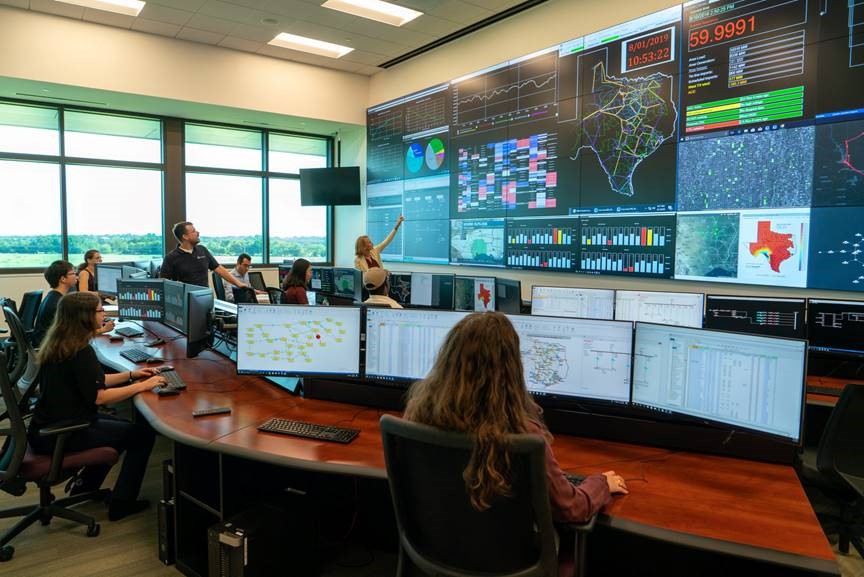The Control Room Lab (CRL) located at the Center for Infrastructure Renewal (CIR) on the RELLIS campus is the home of Dr. Davis’s Resilient Energy Systems Lab (RESLab), the testbed of cyber-physical power system hardware and software that is being used for the simulation and data needs of this project.

Image : CRL Website
It is part of the Smart Grid Center, which is a Division within TEES formed to expand on the smart grid-related efforts of TEES in an area of national interest, to ensure the reliability, sustainability, and security of the electric energy supply. The Center promotes collaboration and the creation of multidisciplinary research teams to investigate smart grid problems and deliver more innovative and effective smart grid solutions.
The hardware and software testbed setup in CRL resembles a common commercial control system infrastructure found in the utility industry today. The initial testbed configuration includes EMS and Synchrophasor production systems as well as various commercial solutions acquired through partnership with major vendors, such as Alstom/GE Grid Solutions, OsiSoft, Esri, National Instrument, OPAL-RT, and others.
RESLab in CRL is equipped with servers, networking equipment, and protection devices such as relays, controllers, and substation equipment, enabling emulation of large-scale power systems such as a 2000-substation synthetic electric grid on the footprint of Texas that the PI’s group made cyber-physical. CRL contains facilities to emulate end-to-end control systems including substations and communication networks, allowing continuous monitoring through actual or virtual substation equipment.
The testbed provides the means for collection, storage, analysis, and visualization of various power system and control system information. In RESLab, the Common Open Research Emulator (CORE) provides a platform to run applications within network emulation such as firewall configuration, intrusion detection, and services such as Secure Shell (SSH). Through CORE, connections are made with other VMs and integration with external applications has been configured.
By developing advanced technology, fostering innovation, and inculcating management and entrepreneurial skills, this unique facility will empower students and professionals in the industry to become the leaders who will help ensure the security of our nation’s critical infrastructure including in government, industry and academia.
References:
- A. Sahu, P. Wlazlo, Z. Mao, H. Huang, A. Goulart, K. Davis, S. Zonouz, “Design and Evaluation of a Cyber-Physical Resilient Power System Testbed,”published in IET Cyber-Physical Systems, June 2021. View
- P. Wlazlo, A. Sahu, Z. Mao, H. Huang, A. Goulart, K. Davis, S. Zonouz, “Man-in-The-Middle Attacks and Defense in a Power System Cyber-Physical Testbed,” published in IET Cyber-Physical Systems, June 2021. View
- A. Sahu, Z. Mao, P. Wlazlo, H. Huang, K. Davis, A. Goulart, S. Zonouz “Multi-Source Data Fusion for Cyberattack Detection in Power Systems,” published in IEEE Access, 2021. View
- H. Huang, P. Wlazlo, Z. Mao, A. Sahu, K. Davis, A. Goulart, S. Zonouz, C Davis, “Cyberattack Defense With Cyber-Physical Alert and Control Logic in Industrial Controllers,” published in IEEE Transactions on Industry Applications, Sept.-Oct. 2022. View
